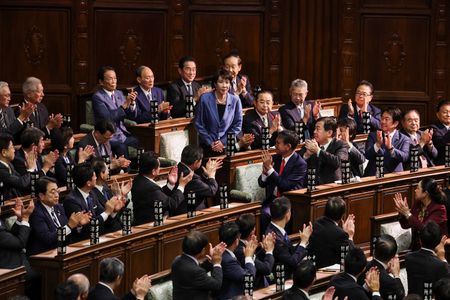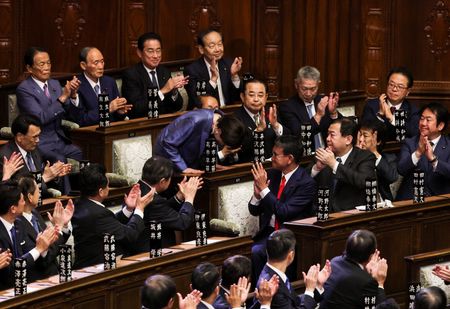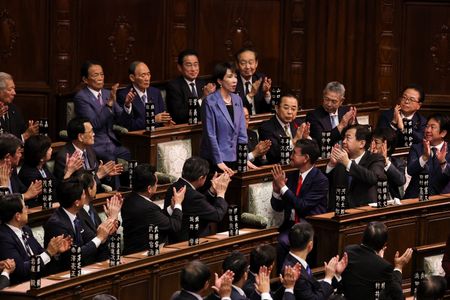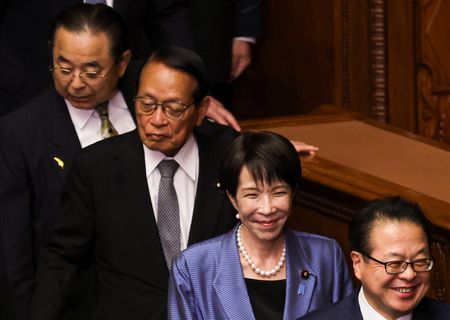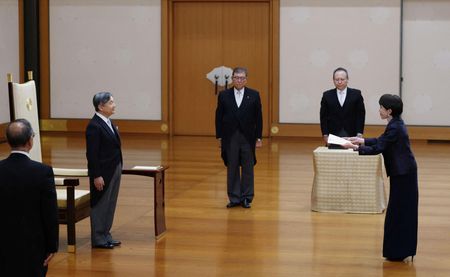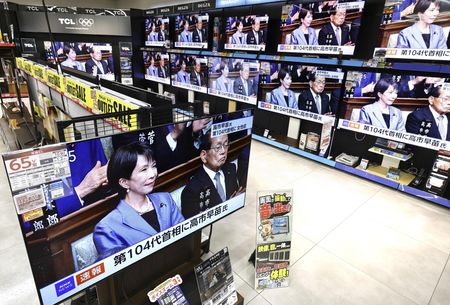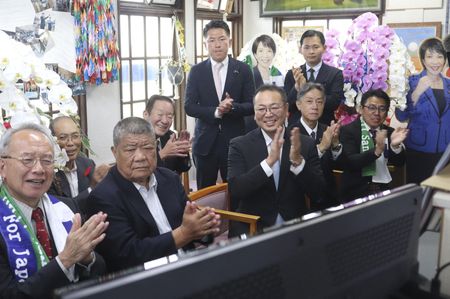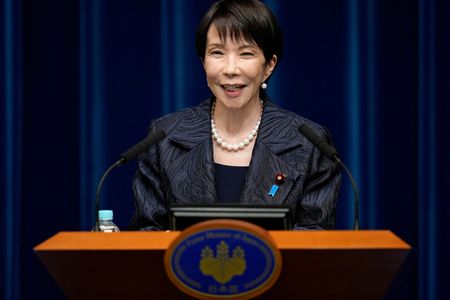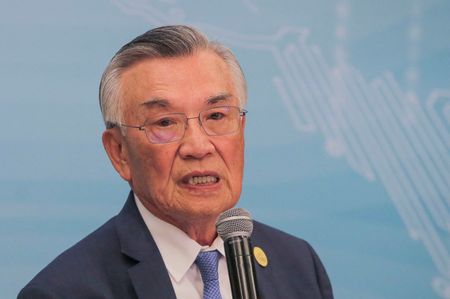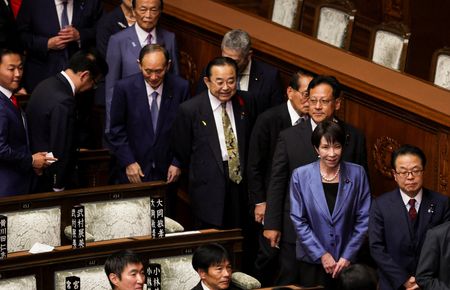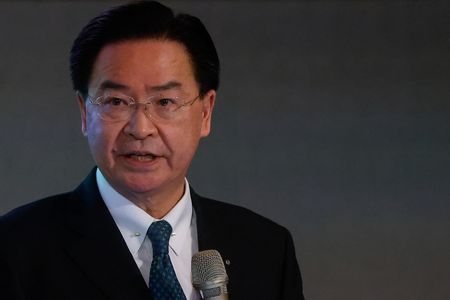By Mariko Katsumura and Tim Kelly
TOKYO (Reuters) -Hardline conservative Sanae Takaichi was elected Japan’s first female prime minister on Tuesday, shattering a political glass ceiling for women and setting the country up for a decisive turn to the right.
An acolyte of former Prime Minister Shinzo Abe and an admirer of Britain’s Margaret Thatcher, Takaichi is expected to return to Abe-style government stimulus as she attempts to jumpstart an economy struggling with slow growth and rising prices. Her victory marks a pivotal shift in a country where men hold overwhelming sway, yet she named just two women to her cabinet, fewer than she had promised.
Takaichi is likely to make a sharp turn to the right on immigration and defence, reflecting the broader rightward shift in global politics. In her first press conference, she promised to work tirelessly to restore Japan’s economic might, and deepen the relationship with the United States under President Donald Trump.
“I am determined to deliver results for the nation, to build a strong Japan and to never give up,” she said.
“I also plan to meet President Trump at an early date to elevate the Japan-U.S. relationship to new heights,” she said.
VICTORY SECURED AFTER COALITION SEALED
Her victory was secured after her Liberal Democratic Party, which has governed Japan for most of postwar history, agreed on Monday to form a coalition with the right-wing Japan Innovation Party, known as Ishin.
Together the parties are two seats short of a majority in the lower house. For Takaichi to be successful, she will need to find ways to cooperate with opposition lawmakers, said Tadashi Mori, a professor of politics at Aichi Gakuin University.
“The two parties do not command a majority in either chamber and to ensure a stable government and gain control of key parliamentary committees, they will need to secure more than half the seats,” he said.
NO ‘NORDIC’ CABINET AFTER ALL
Takaichi named just two women to her cabinet: Fellow Abe disciple Satsuki Katayama becomes the country’s first female finance minister, while Kimi Onoda becomes economic security minister.
In her leadership campaign she promised to boost the number of women in the cabinet to match socially progressive Nordic countries. But while the percentage of female ministers in Nordic governments ranges from Denmark’s 36% to Finland’s 61%, under Takaichi women will make up only 16% of Japan’s cabinet – including her.
“Only two female ministers, no surprise,” said Yoko Otsuka, a professor of welfare policy and gender studies at Ritsumeikan University. “A female prime minister might slightly improve Japan’s Global Gender Gap Index ranking, but the reality barely changes.”
PREVIOUS COALITION BROKE UP AFTER QUARTER CENTURY
Takaichi takes over when Japanese politics appears more fractured than at almost any other time in recent memory, thanks in part to the rise of the smaller, hard-right Sanseito Party, which has siphoned voters away from the LDP.
Sanseito chief Sohei Kamiya said that both national politics and the LDP had been on a leftward drift since the assassination of former premier Abe in 2022. Takaichi, he told broadcaster NHK, could possibly reverse that.
“While we won’t hesitate to oppose her when necessary, we intend to maintain a friendly working relationship,” he said.
The LDP’s former coalition partner, the more moderate Komeito, broke up their 26-year-old alliance this month after the LDP chose the right-wing Takaichi as new leader.
TAKAICHI TRADE MOVES STOCKS HIGHER
Takaichi’s endorsement of Abe-style fiscal stimulus has prompted a so-called “Takaichi trade” in the stock market, sending the Nikkei share average to record highs and helping draw the attention of global money managers.
But it has also caused investor unease about the government’s ability to pay for more spending when the debt load outweighs annual output. Both the yen and bond prices have weakened as a result.
Some analysts say Ishin, which has advocated for budget cuts, could restrain some of Takaichi’s spending ambitions.
Takaichi has said defence and national security would be core pillars of any administration she led.
A frequent visitor to the Yasukuni war shrine in Tokyo that some Asian neighbours view as a symbol of wartime aggression, Takaichi has also called for a revision of Japan’s postwar pacifist constitution to recognise the existence of the nation’s military forces.
Rising political star Shinjiro Koizumi will serve as defence minister while veteran lawmaker Toshimitsu Motegi will be foreign minister.
Takaichi was sworn in as Japan’s 104th prime minister on Tuesday evening, succeeding Shigeru Ishiba, who last month announced his resignation to take responsibility for election losses.
(Reporting by Mariko Katsumura, Tim Kelly, Kantaro Komiya, Yoshifumi Takemoto, Satoshi Sugiyama and Kentaro Okasaka; Additional reporting by Kiyoshi Takenaka; Writing by David Dolan; Editing by Kate Mayberry and Hugh Lawson)

